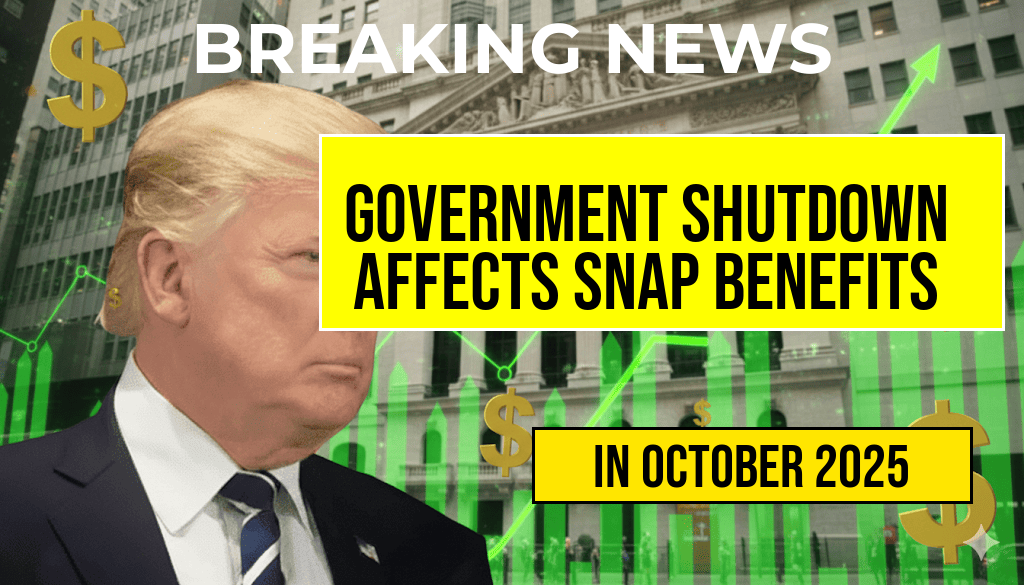The recent government shutdown has created widespread uncertainty across numerous federal programs, with Supplemental Nutrition Assistance Program (SNAP) benefits and food stamp assistance among the most vulnerable. As federal agencies face funding gaps, millions of Americans relying on these programs may experience disruptions or delays in their benefits. Unlike typical policy changes, a shutdown halts or slows the processing of new applications, recertifications, and benefit distributions, directly impacting individuals and families who depend on regular food assistance to meet basic needs. While some states have contingency plans to mitigate immediate effects, the overall landscape remains unpredictable, raising concerns about increased food insecurity during a period of economic uncertainty. This article explores the mechanisms of SNAP during a government shutdown, potential consequences for beneficiaries, and ongoing efforts to address the crisis.
Understanding SNAP and Its Role in Food Security
The Supplemental Nutrition Assistance Program (SNAP) is the largest federal aid initiative providing nutrition assistance to low-income individuals and families. Managed by the U.S. Department of Agriculture (USDA), SNAP delivers benefits via electronic benefit transfer (EBT) cards, which recipients can use at authorized retailers to purchase food items. The program plays a critical role in reducing food insecurity, with over 40 million Americans relying on SNAP benefits as of 2023 (Wikipedia).
Impact of a Government Shutdown on SNAP
Funding and Operational Challenges
In the event of a federal government shutdown, funding for SNAP is typically affected since the program’s operations depend on annual appropriations approved by Congress. During past shutdowns, the USDA has often assured that benefits for the current month are issued without interruption, as funds are usually available for immediate disbursement. However, complications arise for future benefits, recertifications, and processing new applications. When federal agencies are closed or operating with limited staff, processing times lengthen, and some administrative functions cease altogether.
Benefit Disbursements and Recertifications
- Monthly benefits are generally protected for recipients during the shutdown period, ensuring that those already enrolled do not immediately lose access.
- Recertification and renewal processes may be delayed, potentially causing some recipients to lose benefits if they do not complete required paperwork within specified timeframes.
- New applicants often face significant delays, potentially leaving those in need without assistance until the shutdown concludes.
State-Level Responses and Variations
States often have contingency plans to cushion the impact of federal shutdowns. Some state agencies maintain reserve funds or use existing state budgets to cover administrative costs temporarily. Others may extend deadlines or suspend certain eligibility requirements to prevent gaps in benefits. Nevertheless, these measures vary significantly across jurisdictions, and prolonged shutdowns could overwhelm state resources, leading to an increased risk of food insecurity among vulnerable populations.
Potential Consequences for Food Security
| Impact Area | Potential Outcomes |
|---|---|
| Immediate Benefits | Most recipients retain benefits for the current month, but future allocations may be delayed. |
| Recertifications | Delays could lead to temporary suspension or loss of benefits for some recipients. |
| New Applications | Processing halts may leave new applicants without assistance for extended periods. |
| Food Insecurity | Increased risk for families facing economic hardships, especially amid rising food prices. |
Government and Advocacy Responses
Legislative Efforts and Temporary Measures
Congress has historically taken steps to mitigate the impact of shutdowns on essential programs like SNAP. In some instances, legislation has been enacted to provide emergency funding or to bypass certain administrative delays. However, such measures are often temporary, leaving ongoing uncertainty about the long-term stability of food assistance programs.
Community and State Initiatives
Many states and community organizations mobilize resources to support affected populations during shutdowns. These efforts include distributing emergency food supplies, expanding local food bank programs, and providing information about available assistance options. Nonetheless, these initiatives cannot fully substitute the federal safety net, especially for those who rely on consistent, predictable benefits.
Looking Ahead
The potential for disruptions to SNAP benefits underscores the importance of sustained federal funding and policy stability. As debates continue in Congress over government funding and social safety net programs, advocates emphasize the need to protect vulnerable populations from the collateral damage of political impasses. For individuals relying on food assistance, the best course of action involves staying informed through official channels, maintaining communication with local assistance programs, and exploring emergency resources when necessary.
For further details on SNAP and government shutdown procedures, resources such as the USDA’s official site (fns.usda.gov) and the Congressional Research Service provide comprehensive updates and guidance.
Frequently Asked Questions
What is the impact of a government shutdown on SNAP benefits?
During a government shutdown, SNAP benefits may be temporarily affected, leading to delays or disruptions in food stamp assistance. However, in many cases, existing benefits are still distributed based on prior funding, but future benefits may be uncertain.
Will SNAP recipients still receive their benefits during a shutdown?
Typically, SNAP recipients continue to receive their benefits during a shutdown if funding is already in place. Nevertheless, prolonged shutdowns can threaten the continuation of food stamp assistance and may result in delayed payments.
How does a government shutdown affect food assistance programs?
A government shutdown can lead to the suspension or delay of food assistance programs, including SNAP. Essential services may be prioritized, but non-essential administrative functions often face funding shortages, impacting beneficiaries.
Are there any emergency measures to support SNAP beneficiaries during a shutdown?
In some cases, emergency measures or funding extensions are implemented to ensure SNAP benefits continue uninterrupted. However, these are temporary solutions, and ongoing shutdowns may still pose risks to consistent food stamp support.
What should SNAP recipients do if their benefits are delayed due to a government shutdown?
If SNAP benefits are delayed, recipients should contact their local assistance office for guidance. It’s also advisable to stay informed through official government updates regarding the status of food stamp programs during the shutdown.






